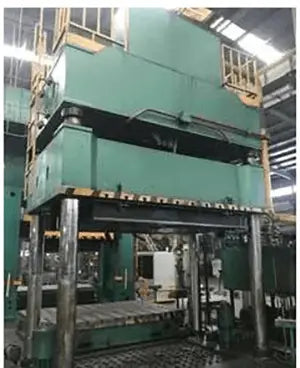The machinery manufacturing industry covers a wide range of sectors, including transportation, machine tools, agricultural machinery, textile machinery, electrical machinery, and precision instruments. In general, the production process involves casting, forging, heat treatment, machining and assembly workshops.
The basic production flow consists of casting, forging, heat treatment, machining and assembly. In the machine manufacturing process, metal parts are typically created through casting, forging, welding, stamping and other methods, followed by cutting to produce qualified parts, and finally assembled into a machine.
Machining is the use of various machine tools to perform operations such as turning, planing, drilling, grinding, milling and other cold processing on metal parts.
The assessment and detection of occupational risks are crucial in the machinery industry, particularly in the machine manufacturing sector. There are many potential dangers in this industry and the following points highlight some of the factors that require attention.
O occupational risk factors
1 . Forging
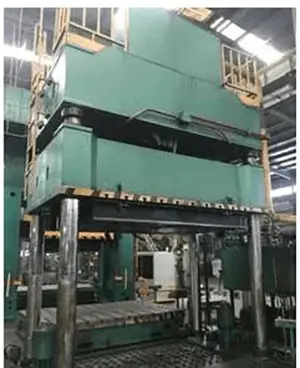
Forging is a process in which an external force is applied to a blank, causing plastic deformation and resulting in forging.
Physical risks:
Noise is the most harmful occupational hazard in the forging process. Forging hammers (pneumatic hammers and pressure hammers) can generate strong and intense noises and vibrations, generally in the form of impulsive noise, with an intensity greater than 100dB (A). A noise detection carried out in the forging workshop of a machinery factory showed results ranging from 83 to 100.2dB(A), with an average of 92.08dB(A). Punching machines and cutting machines can also produce high-intensity noise, but the intensity is typically lower than that of forging hammers.
The temperature in the heating furnace can reach 1200°C, while the forging temperature is between 500-800°C. During production, high temperatures and strong radiant heat can be produced in the workplace.
Dust and poison hazards:
Metal dust and coal dust can be generated during loading, unloading and forging in the forging furnace and forging hammer, particularly in fuel industry furnaces. Combustion furnaces can emit harmful gases such as carbon monoxide, sulfur dioxide and nitrogen oxides.
two . Foundry
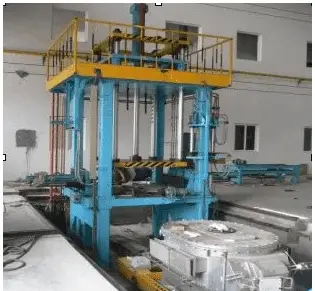
Modeling can be divided into manual and mechanical molding. Manual molding involves completing sand squeezing, removing the mold, cutting and closing the box manually. This process is highly labor intensive and exposes workers directly to dust, chemical poisons and physical factors, leading to significant occupational risks. On the other hand, mechanical molding features high productivity, stable quality, low labor intensity for workers, and less chances of workers coming into contact with dust, chemical poisons and physical factors, resulting in relatively small occupational hazards.
Dust hazard:
A significant amount of sand dust is produced during molding, casting sand falling and cleaning. The nature and damage of dust is mainly determined by the type of molding sand used. For example, when using quartz sand, it is more harmful due to its high free silica content. A dust concentration detection carried out in the molding workshop of a machinery factory found results ranging from 27.5 to 62.3 mg/m 3 with an average of 39.5 mg/m 3 .
Poisons and physical hazards:
The drying, melting and pouring of coal from the sand mold and sand core results in high temperature and heat radiation. If coal or gas is used as fuel, it produces carbon monoxide, sulfur dioxide and nitrogen oxides. If high-frequency induction furnaces or microwave ovens are used for heating, high-frequency electromagnetic fields and microwave radiation will be produced.
3 . Heat treatment
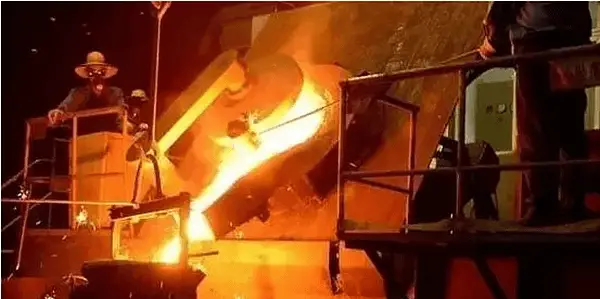
The main objective of the heat treatment process is to change the physical properties of the metal, such as hardness, toughness, elasticity, conductivity, among others, while preserving the shape of the parts. This aims to meet process requirements and improve product quality.
The heat treatment process covers normalizing, quenching, annealing, tempering and carburizing.
Heat treatment can be classified into three categories: general heat treatment, surface heat treatment (which includes surface quenching and chemical heat treatment) and special heat treatment.
Toxic gas
The heat treatment processes of mechanical parts, including normalizing, annealing, carburizing, quenching and others, require a wide range of auxiliary materials, such as acids, alkalis, metal salts, nitrates and cyanides.
These ingredients are highly corrosive and toxic substances that can pose a significant threat to the environment and human health.
For example, when barium chloride is used as a heating medium and the temperature reaches 1300°C, a large amount of barium chloride evaporates, creating barium chloride dust that contaminates the workshop air.
The chlorination process also releases a substantial amount of ammonia into the workshop air.
Potassium ferrocyanide and other cyanides are used in the carburizing and carburizing processes, while nitrogen oxides are produced through the interaction of molten nitrate and oil slick with the part in a salt bath furnace.
Furthermore, organic agents such as methanol, ethanol, propane, acetone and gasoline are often used in the heat treatment process.
Physical risks
Normalization and annealing of mechanical parts are heat treatment processes carried out at high temperatures. Heating furnaces, salt baths and parts heated in the workshop are sources of heat.
These heat sources can create a high temperature environment with strong thermal radiation.
Additionally, various motors, fans, industrial pumps and other mechanical equipment can generate noise and vibration. However, the noise level in most heat treatment shops is low and cases where noise exceeds standards are rare.
4 . Machining
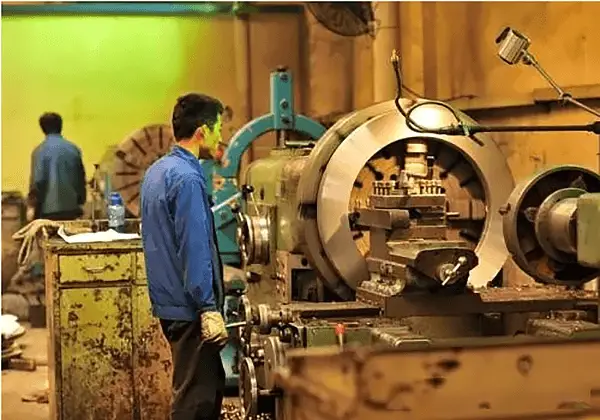
In the mechanical manufacturing process, metal parts are manufactured using casting, forging, welding, stamping and other techniques. Then, various machine tools such as lathes, planers, drills, grinders, milling machines and others are used to carry out cold processing on the metal parts, including turning, planing, drilling, grinding and milling. Finally, qualified parts are cut and assembled on machines.
General machining
Occupational risks in the production process are minimal, mainly due to the use of cutting emulsions and the impact of cutting on workers.
Commonly used cutting emulsions consist of mineral oil, naphthenic acid or oleic acid, and alkali (caustic soda). High-speed transfer of machine tools can cause emulsion splashes, which can easily pollute the skin and cause skin diseases such as folliculitis or acne.
During the machining process, there is also a significant amount of metal and mineral dust generated in coarse and fine grinding. Synthetic sharpening stones are mainly composed of emery (alumina crystal), with a low content of silicon dioxide, while natural sharpening stones contain a large amount of free silicon dioxide, which can result in pneumoconiosis and aluminum silicosis.
Most machine tools produce mechanical noise ranging between 65 dB (A) and 80 dB (A), and cases of excessive noise are rare.
Special machining
Occupational risk factors in specialized machining are mainly related to the machining tools used.
For example, EDM produces metal powder, laser processing generates high temperatures and ultraviolet radiation, electron beam X-ray generates metal powder, ion beam processing produces metal powder, ultraviolet radiation and high frequency electromagnetic radiation, and if a tungsten electrode is used, ionizing radiation may also be present.
On the other hand, electrochemical machining, liquid jet machining and ultrasonic machining have relatively lower risks.
Furthermore, the operation of the equipment may also generate noise and vibration.
5 . Mechanical assembly
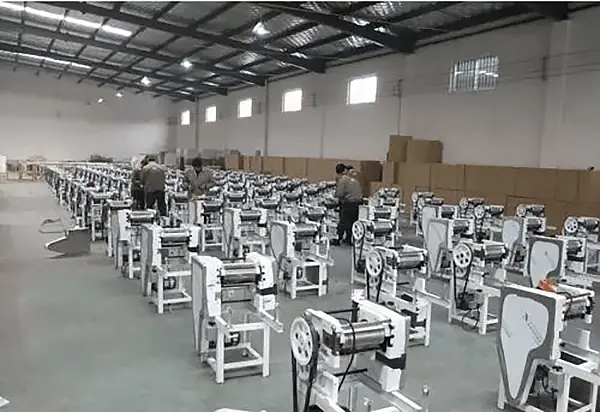
Occupational risk factors in simple mechanical assembly processes are few and similar to those in general machining.
However, in complex assembly processes, occupational risks are mainly related to the specific assembly techniques used.
For example, the use of various welding techniques may result in welding-related occupational hazards, while the use of adhesives may result in adhesive-related occupational hazards. If a coating process is required, there may also be occupational hazards associated with the coating process.
Protective measures
Occupational hazards in the machine manufacturing industry mainly include the hazards of silicon dust in foundry production, organic solvents such as benzene and its derivatives in coating production, and welding dust (smoke) in welding operations. To address these dangers, the following measures must be taken:
- Reasonable workshop layout: In the design of the workshop, efforts should be made to minimize cross-pollution of occupational hazards. For example, the smelting furnace must be located outdoors or away from busy areas, and the riveting, welding and painting processes must be separated.
- Dust Control: Low-free silica molding sand should be used whenever possible, and manual molding and sand cleaning should be reduced. Sand cleaning is the process with the highest concentration of dust in foundry production and should receive special attention. This can be achieved by installing high-powered ventilation and dust removal systems and carrying out wet spraying operations to reduce the concentration of dust in the workplace air. Workers must also wear dust masks that meet relevant national standards.
- Antivirus and emergency response: Sealing measures or local ventilation devices must be installed for equipment that may produce chemical toxins in heat treatment and metal smelting processes. In workplaces that produce highly toxic gases such as carbon monoxide, hydrogen cyanide, formaldehyde and benzene (e.g. certain tempering, painting and gluing processes), emergency response plans for acute occupational poisonings must be implemented, warning signs must be posted and gas masks or respirators must be provided.
- Noise control: Noise is a significant occupational hazard in the machine manufacturing industry and can be controlled by reducing high-intensity noise from equipment such as pneumatic hammers, air compressors, grinding machines, polishers, stamping machines and cutting equipment. High-intensity noise sources must be centralized and acoustic insulation protection must be used. Sources of aerodynamic noise must be muffled at entry or exit. Acoustic insulation and absorption treatments must be applied in control rooms and post-operative rooms. Workers who enter workplaces with sound intensity greater than 85dB(A) must use ear plugs or anti-noise ear protectors.
- Vibration control: Vibration is a common occupational hazard in the machine manufacturing industry. Measures must be taken to reduce vibration or implement rotational operations for equipment such as riveting machines, forging presses, molding sand compactors, sand falling systems, and sand cleaning machines.
- Radio frequency protection: Appropriate shielding materials must be used to protect equipment that produces high frequency, microwave and other radio frequency radiation. Distance isolation and weather protection must also be provided.
- Heat stroke prevention: Effective summer heat prevention and cooling measures should be taken for workers in high-temperature environments such as casting, forging and heat treatment. This can be achieved through a combination of engineering technology, health care and work organization and management measures, such as the rational arrangement of heat sources, provision of fresh and savory beverages, rotational operations and air conditioning in work rooms. control and operating rooms.

